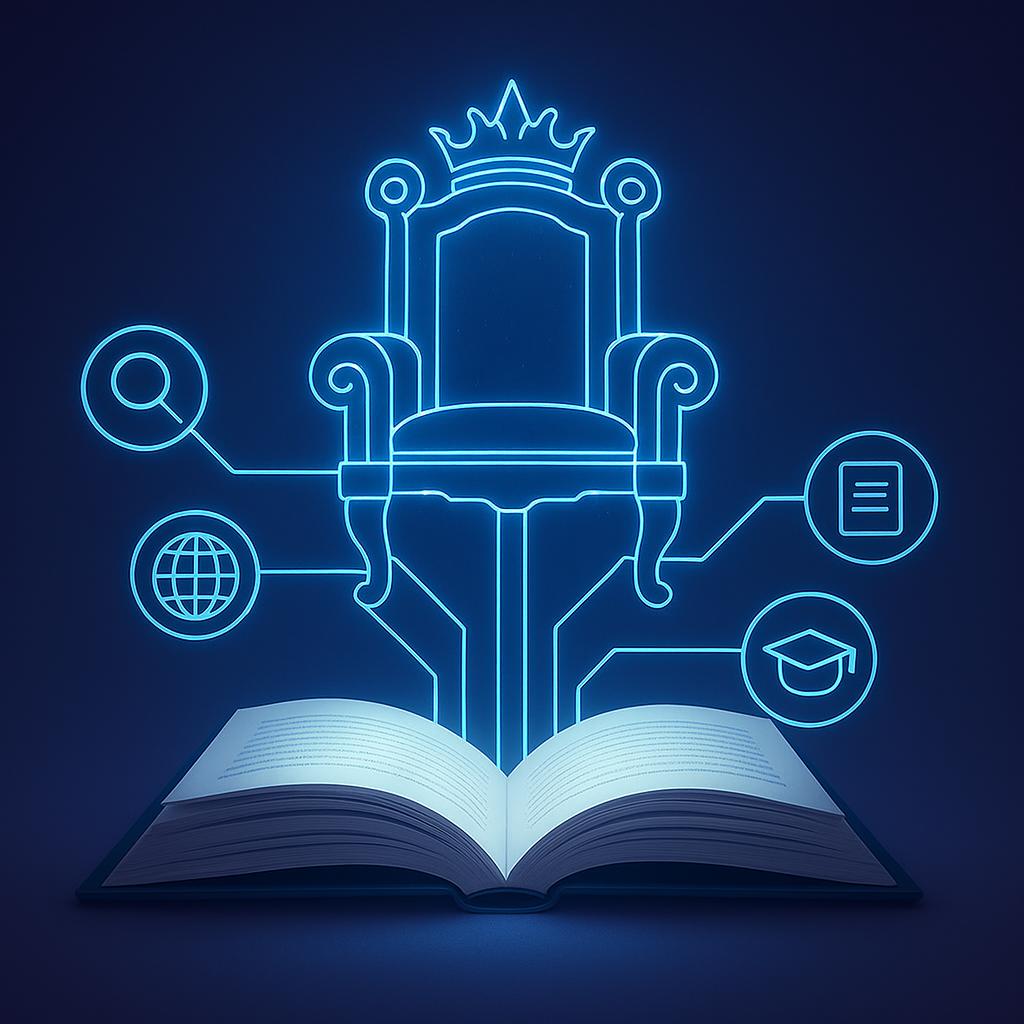Topical authority means being recognized as a go-to source for information in a specific area, but developing this reputation takes time and consistent effort. It is one of the critical factors for better SEO, as search engines prioritize sites that demonstrate clear expertise in their chosen subject areas.
As with other challenges in content creation, relying on traditional methods to achieve topical authority can become overwhelming and slow. This is where artificial intelligence steps in, with its tools and insights that make it easier to research, create, and update content.
What Is Topical Authority?
Topical authority (TA) reflects how much trust and recognition a source has earned around a specific subject.
Search engines use signals such as topic coverage, content quality, and internal linking to measure expertise in a domain.
Sites with high TA rank more easily for related keywords and are more likely to attract backlinks from other reputable sources.
Instead of just sharing basic facts, authoritative sites present original insights, case studies, and data-driven content.
To build this status, creators need to organize information in ways that help readers navigate complex subjects with confidence.
Common features of a site with strong topical authority include:
- Comprehensive topic clusters
- In-depth, original analysis
- Consistent updates to address current trends
- Logical internal links
These factors together help audiences and algorithms recognize the site as a reliable resource in its field.
The Challenges in Building Topical Authority Manually
Manual topical authority building demands a deep grasp of the subject and constant monitoring of updates. Creating original insights takes extensive research and time.
Writers must outline full topic clusters, spot content gaps, and keep everything up to date. Working without scalable tools, teams risk missing trends or duplicating content.
Internal linking becomes complex as content libraries grow, and sourcing and synthesizing new data for each post increases the workload.
Manual efforts also face difficulties in consistently aligning content with changing search intent. Resource constraints, like limited staff or budget, delay production.
Evaluating competitors takes more effort, and slow reaction times can let rivals take the lead. These hurdles make it difficult for single creators or small teams to maintain a visible, expert presence over time.
How AI Supports Topical Authority Development
Using AI tools lets content creators analyze larger datasets, uncover insights faster, and keep pace with changes in user search habits and competitor strategies. All of this improves SEO.
Below, these practical benefits are broken down according to the most important parts of the topical authority journey.
1. Content Research & Strategy
AI accelerates the first and most critical phase: researching topics, keywords, and the content scene. Advanced platforms gather and organize relevant data from across the web, and give content teams a reliable snapshot of popular questions and trending subtopics.
Where old approaches required days of manual collection and note-taking, AI tools now instantly suggest clusters of closely related subjects, ideal for supporting content hubs and pillar pages.
Here are ways AI improves the research and planning process:
- Clustering tools group related keywords and topics.
- SERP (Search Engine Results Page) analysis at scale uncovers existing authority leaders and content formats favored by search engines.
- Natural language processing (NLP) finds core concepts and related subthemes.
- Data visualization helps teams spot emerging trends and outliers.
A quick comparison:
| Traditional Research | AI-Augmented Research |
|---|---|
| Manual keyword collection | Automated topic and keyword suggestions |
| Hand-drawn maps/diagrams | Dynamic, visual content mapping |
| Slow competitor analysis | Instant insights from multiple SERPs |
2. Content Creation & Optimization
Writing hundreds of quality articles within a niche requires expertise and the ability to maintain variety.
AI-powered platforms assist writers by providing relevant outlines, summaries of academic and industry sources, and insights into underexplored perspectives based on the latest search data.
Core strengths of AI in content development include:
- Outline generation: AI suggests headlines, questions, or sections based on competitor analysis and search data.
- Fact-checking and summarization: Algorithms extract key data points and help writers stay accurate.
- Semantic optimization: Content is matched with search intent using suggested related terms and FAQs.
- Style and tone calibration: AI adjusts drafts to fit target audiences, whether expert or casual readers.
Example workflow:
- Writer inputs primary keyword or theme.
- AI generates a cluster of supporting subtopics and outlines.
- Draft is written with suggested internal links and optimized for search queries using phrase recommendations.
The result is consistently high-quality, in-depth articles designed to answer the full spectrum of audience queries.
3. Content Refresh & Maintenance
Content maintence ensures every article stays current and relevant as trends shift and new research emerges. AI excels at flagging outdated information, broken links, and evolving search patterns: it makes ongoing updates more systematic and has a positive effect on SEO.
Many platforms can scan entire libraries. They prioritize which URLs need revision based on declining traffic or competitor movement.
Key maintenance advantages:
- Automated monitoring: Content is regularly checked for factual accuracy, broken links, or keyword decay.
- Update recommendations: AI surfaces high-impact opportunities to update stats, incorporate new research or restructure existing posts.
- Performance tracking: Traffic, rankings, and engagement metrics are aggregated to find underperforming pages or keywords.
Action steps AI might enable:
- Quarterly site scans pinpoint pages losing rank due to newer or longer competitor content.
- Tools recommend additional internal links from recent articles to foundational posts.
- AI summarizes updated research and revise outdated sections with fresh citations or examples.
Routine maintenance, once daunting, becomes manageable, and the whole site continually signals expertise to search engines and readers.
4. Personalization & User Intent Matching
Visitors arrive with different expectations. Meeting these needs strengthens topical authority by showing deep awareness of audience goals.
AI personalization tools analyze behavior and adapt content recommendations in real time. They also help decode subtle search intent shifts, ensuring new content speaks directly to what readers want now, not only what they searched for last year.
Ways AI supports intent-based personalization:
- Content recommendations: Algorithms suggest related articles based on real-time user actions and past visits.
- Intent detection: By studying search queries, AI distinguishes between informational, transactional, and navigational needs, guiding writers to produce focused content.
- Adaptive internal linking: As readers move through a site, suggested links change to match their journey.
Benefits seen in real use:
- Returning readers are offered in-depth guides when they’ve previously read introductory posts.
- First-time visitors are steered to “best of” or foundational content to build trust quickly.
- Unmet intent is spotted by analytics, prompting the creation of targeted tutorials or comparison pages.
By systematically matching content with user needs, sites reinforce their authority with both human visitors and search engines.
Summary
AI is reshaping how writers and marketers build topical authority and strenghten SEO. It provides faster research, strategic insights, and adaptive content updates that manual methods often miss. With the help of AI, content teams easily spot gaps and trends, keep their articles fresh, and navigate the demands of search intent without stretching themselves thin.
Automated clustering, smart outlining, and real-time audience analysis improve the depth and timing of every piece published. These tools empower even small teams to create content hubs, maintain quality, and optimize user experience.
As digital competition increases, those who pair expertise with AI-driven tools are most likely to gain lasting trust and stay visible in search results.



